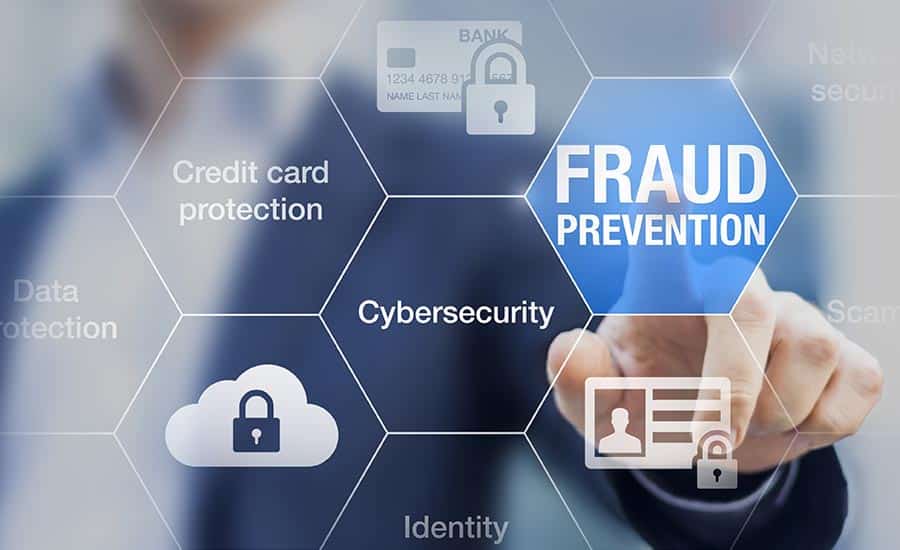The Ultimate Guide to Prevent eCommerce Fraud
Sat 05 Mar 2022
Ecommerce business owners should know how to prevent any kind of fraud without any problem. Otherwise, they can end up spending huge sums of money to deal with such issues. Ecommerce is gaining more popularity with each new day. This where on one hand has increased its worth to trillions of dollars has on the other hand attracted the attention of fraudsters. In any case, as the market grows, cyber scams do as well.
The kinds of scams and tricks that those phonies use are continuously evolving. The need to forestall eCommerce scams has never been more crucial as fraudsters change strategies to target what they presently see to be easier to attack. It’s usually during the holiday seasons when organizations are getting scammed. Generally speaking, the number is rising every year.
Ecommerce fraud types: Generally speaking, there are two fundamental kinds of e-commerce extortion for entrepreneurs to look out for. They can be either friendly frauds or identity frauds.
Friendly frauds: They happen when customers debate the charge in a trustworthy manner. The fraudster buyers can assert to have received the wrong item or damaged product and claim a refund.
Identity frauds: They happen when the cheaters use stolen debit or credit cards to make purchases from your e-commerce site or they can also take up the identities of other people and buy things from your site.
As mentioned above, fraud tricks are continually evolving. Criminals have more complicated tactics to commit cybercrime than just stealing card data. Let’s look at the common e-commerce frauds these days.
- Card Not Present fraud happens when a criminal buys unlawfully without actual ownership of the installment card. Practically all internet businesses ask for a Card Verification Value to demonstrate card possession, yet it’s not sufficient.
- Chargeback Fraud happens when a client gets the item they paid for, however they start a chargeback with the expectation to keep both their cash and the product.
- Mail Interception Fraud happens when the cheaters steal the credit card information or a credit card itself and buy products with it.
- Brand impersonation frauds occur when fraudsters steal brand pictures, domains, etc., and pretend to be the real sites.
Although, there is no handy solution for this yet business owners can follow the below-mentioned practices to minimize the danger.
Here are some of the ways that can help you prevent eCommerce extortion:
Have a Plan to Scale Fraud Prevention Properly: Chargebacks can be very damaging to all businesses regardless of their size and risk level. Chargeback fraud occurs when a client debates a charge through their bank that they used to buy from you pretending to never have gotten the item or service they bought. It is difficult to follow and surprisingly harder to stop, however it is one of the most inconvenient types of extortion.
Comprehend Chargeback Reason Codes: Chargebacks all have a similar outcome. Nonetheless, they happen in various ways. Every card issuer has an alternate chargeback reason code. These distinctions matter while questioning the chargeback. If you don’t have any knowledge about them, you will not succeed.
In any case, for most web-based retailers it is possible to get chargeback protection as a part of their eCommerce shipper account. Traders should screen their fraud information and have a strategy to oversee scale. They can utilize their chargeback rate, managerial expenses, and the expenses of lost products as benchmarks for when to make a move.
Make a signature compulsory on delivery: To forestall eCommerce fraud on account of a client claiming to not receive the item, make a signature from the client for expensive things, or by clients who have a past filled with returns and additional questions.
Keep away from Merchant Errors: According to studies, as much as 40% of chargebacks happen due to vendor mistakes. Keep away from things like unclear charging descriptors or complex return exchanges that can baffle genuine clients.
Use fraud protection services: Having a good fraud protection framework set up before shopping seasons can ensure safety and help stay away from any disasters in the purchasing system for online customers.
Record details of the orders: Shipping fraud happens when fraudsters exploit and mess up with customers’ addresses, eventually sending the ordered item to the location that the fraudster wants. Big organizations usually have an unintentional role in this sort of deception. As packages can be easily redirected from an enormous public setting contrasted with a private dwelling.
Traders can battle shipping frauds. Be that as it may, it requires demonstrating the right order shipment and receipt. This requires a great deal of data. You can record shipping data on files. Make it necessary for customers to finish the paperwork for orders.
Give clear charging descriptors and report each touchpoint with clients. Many logistics companies worldwide as well as freight forwarding companies in Dubai offer their customers these services to reduce the number of frauds.
Check delivery and charging addresses: Use address confirmation services to make sure that the delivery and charging addresses are not fundamentally unique, similarly as with the IP and email addresses. Be that as it may, there can be valid justifications for this, for example, somebody transporting a gift to a companion. If all else fails, contact the client.
Use Tools to boost Best Practices: Traders need to focus on account takeover fraud. In an ATO deception, fraudsters get close enough to a corporate email account, which they then, at that point, use to mimic the owner, steal details and accreditations, and that’s just the beginning. Account hacking generally occurs in two ways:
Shoppers’ front: On the shopper front, assuming a client has a long-standing record that gets hacked by the fraudsters, expensive and big purchases aren’t doubted by the businesses if the client doesn’t report it.
This presents more concerning issues to genuine customers. One compromised record can frequently cause a stream down impact to a few records assuming that the client reuses passwords across numerous locales.
Business Front: On the business front, false clients can make accounts, then, at that point, use them for a while before they make fake buys, again raising fewer warnings than new accounts that spend huge sums of money.
Analyze your security: Taking everything into account, dealers need to utilize a blend of best practices and eCommerce fraud prevention apparatuses. Various kinds of devices exist, including extortion platforms and payment options.
Hire a security expert to search for weaknesses in your site and guarantee that you are utilizing a safe installment processor.
Teach staff: Staff attention to security issues and examples of conduct that are characteristic of fraud is critical. Staff will regularly be in the best situation to decide whether a request is normal or not.
Safeguarding clients through risk-based record checking and proactively bringing down phishing destinations before they take your client’s information. Moreover, you can also prevent it by limiting the number of login attempts.
Artificial Intelligence: AI-based strategizing is probably the most effective way to forestall a record takeover. By observing measurements like geolocation, meeting information, and ID, online business frameworks can rapidly distinguish dubious login endeavors and forestall ATO totally.
Use security codes: Make it necessary for customers to introduce the security code that is imprinted on their installment cards. This will assist with guaranteeing that they are in control of the card. Card Verification Value requires a client to give a different three or four-digit recognizing code that is actually composed on their card when they buy something. It is unlawful for vendors to keep CVV information on
Make an account with customers: It can guarantee that clients give more data about themselves. It is helpful to utilize form-filling methods to make the whole process simpler and faster for them.
Contact the client: Use tracking numbers on products and use the contact data they have given, disclosing that you wish to affirm the request.
Analyze IP and email addresses: Use free confirmation administrations to make sure that they are in a similar area, instead of isolating states or even nations. Address Verification Services verifies whether the card charging address a client enters at checkout matches the location the card’s responsible bank has on the document for the card.
Email verification can assist with safeguarding your space from being distorted. At the point when you use email validation, you guarantee that your messages to clients are trusted and don’t get found out in SPAM channels,
Keep an eye out for Phishing Attacks: Fraudsters regularly insert spyware in links and send them out in emails. This is known as phishing. Email frameworks don’t do what’s needed to safeguard organizations. Employees must never reply to an email requesting cash or accreditations.

This article is contributed by Danielle Gregory. Danielle Gregory is a full-time Writer, Traveler, and Marketing Expert who is Currently Working for QAFILA. Danielle’s writing relates to a range of subjects such as logistics and IoT. Besides writing, she enjoys traveling, Cooking, and Riding.
Disclaimer: All views and opinions expressed in The Brew View – our opinion section – are those of the authors and do not necessarily reflect the official policy or position of TheBrew.ae, the company, or any of its members.

 Apr 29 2024
Apr 29 2024












